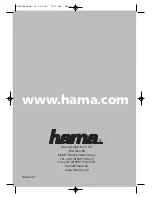
LTC3882-1
46
Rev A
For more information
APPLICATIONS INFORMATION
Figure 22. Type 3 Compensation Circuit
handling requirements of the application. Aluminum elec-
trolytic and dry tantalum capacitors are both available in
surface mount configurations. New special polymer surface
mount capacitors offer very low ESR also but have much
lower capacitive density per unit volume. In the case of
tantalum, it is critical that the capacitors are surge tested
for use in switching power supplies. Several excellent out-
put capacitor choices include the Sanyo POSCAP TPD/E/F
series, the Kemet T520, T530 and A700 series, NEC/Tokin
NeoCapacitors and Panasonic SP series. Other suitable
capacitor types include Nichicon PL series and Sprague
595D series. Consult the manufacturer for other specific
recommendations.
Feedback Loop Compensation
The LTC3882-1 is a voltage mode controller with a second,
dedicated current sharing loop to provide excellent phase-
to-phase current sharing in PolyPhase applications. The
current sharing loop is internally compensated.
While Type 2 compensation for the voltage control loop
may be adequate in some applications (such as with the
use of high ESR bulk capacitors), Type 3 compensation
and ceramic capacitors are recommended for optimum
transient response.
Figure 22 shows a simplified view of the error amplifier EA
for one LTC3882-1 channel. The positive input of the error
amplifier is connected to the output of an internal 12-bit
DAC fed by a 1.024V reference, while the negative input is
connected to the FB pin and other internal circuits (not all
shown). R1 is internal to the IC with a value range given
by the R
VSFB
parameter in the Electrical Characteristics
table. The output is connected to COMP, from which the
PWM controller derives the required output duty cycle. To
speed up overshoot recovery time, the maximum potential
at the COMP pin is internally clamped.
Unlike many regulators that use a transconductance (g
m
)
amplifier, the LTC3882-1 is designed to use an inverting
summing amplifier topology with the FB pin configured
as a virtual ground. This allows feedback gain to be tightly
controlled by external components, which is not possible
with a simple g
m
amplifier. The voltage feedback amplifier
also provides flexibility in choosing pole and zero loca-
tions. In particular, it allows the use of Type 3 compensa-
tion to provide phase boost at the LC pole frequency for
significantly improving the control loop phase margin,
–
+
V
OUT
V
DAC
R1
R3
C3
R2
C1
C2
EA
FB
COMP
INTERNAL
3882 F22
In a typical LTC3882-1 circuit, the feedback loop closed
around this control amplifier and compensation network
consists of the line feedforward circuit, the modulator,
the external inductor and the output capacitor. All these
components affect loop behavior and need to be accounted
for in the frequency compensation.
The modulator consists of the PWM generator, the output
MOSFET drivers and the external MOSFETs themselves.
Step-down modulator gain varies linearly with the input
voltage. The line feedforward circuit compensates for this
change in gain, and provides a constant gain A
MOD
of 4V/V
from the error amplifier output COMP to the inductor input
(average DC voltage) regardless of V
IN
. The combination
of the line feedforward circuit and the modulator looks
like a linear voltage transfer function from COMP to the
inductor input with a fairly benign AC behavior at typical
loop compensation frequencies. Significant phase shift
will not begin to occur in this transfer function until half
the switching frequency.
Figure 23. Type 3 Compensation Frequency Response
GAIN (dB)
FREQ
–1
–1
+1
GAIN
PHASE
BOOST
0
PHASE (DEG)
–90
–180
–270
–380
38821 F23
















































